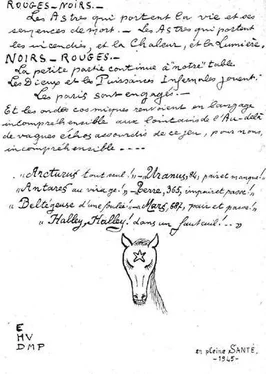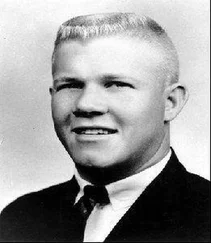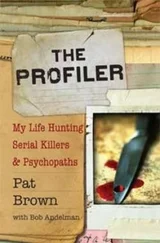Was this how the physician had met Paulette Grippay? The brothel where she worked was located just one street away, on rue Godot de Mauroy. Had Petiot sold her drugs, treated her for disease, or was there some other still-unknown link? The police would soon have their answer, and it would not be at all what Massu expected.
“ALL human preoccupations, all the difficulties, and all the worries of life—in order to end up there,” René Piédelièvre, a forensic expert working on the Petiot case, later reflected after his forty-five years of experience at the autopsy table. By “there,” he meant a lifeless body lying “among the debris which is going to crumble and disappear progressively into a microbial rot in the earth among the devouring insects and their larva, the workers of death.”
Piédelièvre had never forgotten his first trip to rue Le Sueur. Walking across the courtyard, he had stumbled upon what he thought was a pebble. He reached down to examine it and found instead a “fragmented vertebra where one could still see through the ligament.” He had “trampled in the dust of bones” and then, once the debris arrived at the Institut médico-légal, examined the “portions of scalps with the hair completely impregnated by a foul magma.” But, as with Commissaire Massu, the most troubling discovery for Piédelièvre was the drainage pit in the back building, where he saw the many twisted bodies, “cooped together like herring and partially burned by the lime which whitens them like sparrows.”
Some of the bodies were nearly intact, others were dismembered, and an early examination proved to him that the suspect was a skilled dissector. Like his colleagues on the case, Dr. Paul and Dr. Dérobert, Piédelièvre was not yet prepared to state that the murderer was an anatomist, or a forensic specialist, but he was clearly a doctor. “The dislocations were well done,” Piédelièvre said, noting how the suspect had carefully removed the pulpes digitales to prevent fingerprint identification and then removed the face mask in a single cut. Piédelièvre marveled at the “extreme skill” of the murderer.
As forensic scientists, Piédelièvre’s team would serve as an important “auxiliary to justice.” The goal was to render a carefully weighed opinion that, given the hard evidence, they would not soon “be obliged to contradict.” The task in the Petiot case was excruciatingly complicated, as they tried to reconstruct the bodies among the scalped craniums, the broken thighbones, and what Piédelièvre called a “foul muddle” of lime-caked flesh and debris. And when they could not reconstruct, they would resort to calculating the number of victims by weighing the bone fragments.
They were asked to determine the number and gender of the victims. This was difficult enough, but possible by concentrating on certain bones, such as the pelvis, the thighbone, and the femur, all of which were wider and more spread out in the female. Far more difficult, however, was trying to determine the time and cause of death. Most of the remains were not only savagely mutilated, but also in an advanced state of decomposition.
To complicate matters further, the forensic team had found no evidence of a bullet, knife, bludgeon, or other violent wound. A few of the victims had broken arms or legs, but the angle of fracture suggested that this had probably happened after death, and clearly after the skin and muscles had been removed from the bone. The implication was that the breaks had occurred when an arm or leg had been crammed into the small space of the basement stove.
Nor were there bloodstains, smears, drops, splashes, or even a trace of poison. In most cases, the internal organs had been cut out. Disemboweling the victim had certainly diminished the stench; it would also multiply the difficulties of finding the cause of death. In the few instances when they found internal organs, it was feared that the fire, the lime, and the advanced putrefaction would prevent the organs from yielding any significant conclusions.
The unanswered questions were certainly accumulating. Massu needed to learn everything he could about the suspect and who, if anyone, might be helping him. “The smallest testimony can have its importance,” Massu said, sending detectives across the city looking for anyone who might have known the doctor.
MAURICE Petiot, meanwhile, was brought in for a second interrogation.
“Would you please indicate how you spent your time during the days of March 11 through March 13?”
On the eleventh, Maurice answered, he had stayed the entire day in Auxerre. He had made some repairs in the neighborhood, and then, in the evening, he received his friend Albert Neuhausen, who arrived on the 9:30 train from Paris. As he had “no means of returning home to Courson,” Maurice had invited him to stay the night at one of his properties.
On Sunday the twelfth, Maurice worked on the central heating of his property on rue Sous-Murs. In the evening, he and his wife, Monique, went to an auction house and purchased a rug. On the thirteenth, he remained at home on rue du Pont until three in the afternoon, when he biked to Seignelay to visit a farm that Georgette Petiot had inherited from her father after his death in October 1943. “I did not find anyone there,” Maurice said, adding that it was only that day that he heard the news of the police investigation.
“Contrary to what you claim,” Massu said, “you have sent certain products or material to the property at rue Le Sueur. Would you like to explain?”
“If I have sent any materials, it is for you to prove it.”
“You have sent some, including lime.”
“It is for you to prove.”
Massu was well on his way to doing just that. The truck driver who came by the Hôtel Alicot looking for Maurice about a delivery, Jean Eustache, had already contacted the police with a major revelation. Eustache, age twenty-two, informed detectives that he had made deliveries for Maurice Petiot on four or five occasions. Mostly it was electronics or furniture, but the last time, in mid-February 1944, Eustache and a fellow worker named Robert Massonière had picked up Maurice Petiot in truck number 290-ZU-4 and driven him to a quarry outside Aisy-sur-Armançon, where they had collected four hundred kilograms of quicklime.
“He told me it was for whitewashing the property,” Eustache said. Upon arrival in Paris about ten o’clock on the morning of February 19, 1944, the three men had unloaded the sacks just inside the carriage entrance to a private mansion somewhere in the city. Eustache was not sure exactly where. Maurice did not pay him anything for the transport, he said, and he assumed that the price had been negotiated with his employer.
Massu did not specifically question Maurice yet about the lime, as he did not have the deposition in front of him. Instead, the commissaire pressed on, preparing the ground for the future confrontation.
“Have you seen any lime on the property at rue Le Sueur?”
“No,” Maurice answered. “I have never seen any there.”
Massu asked about his whereabouts on February 19. Once again, Maurice claimed to have spent the day at home. Did he know a man named Jean Eustache? Yes, Maurice said, but not very well, and he could not say for sure the last time he had seen him. How about on the nineteenth?
Maurice hesitated, removed his scarf, and then calmly said that he would now tell the truth. He had come to Paris about that time, probably the nineteenth, in a small truck driven by Eustache. Maurice then claimed that he had been dropped off at the Place de la Concorde, while Eustache and a coworker at the delivery firm proceeded to make deliveries. The three of them were to meet the following day about two o’clock at the intersection of rue Le Sueur and the Avenue Grande Armée. Maurice was then supposed to direct them to a warehouse, where they would haul away “the electrical material that I had bought.”
Читать дальше












